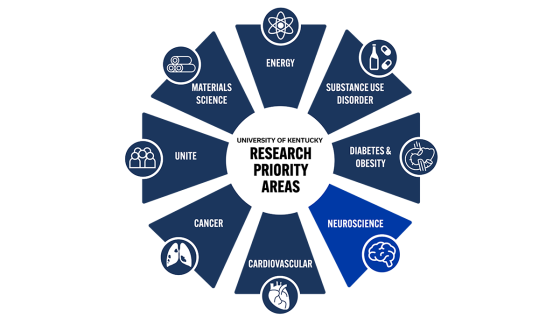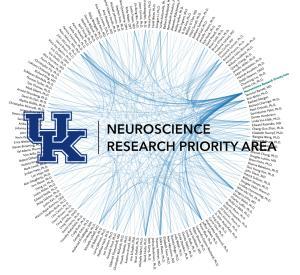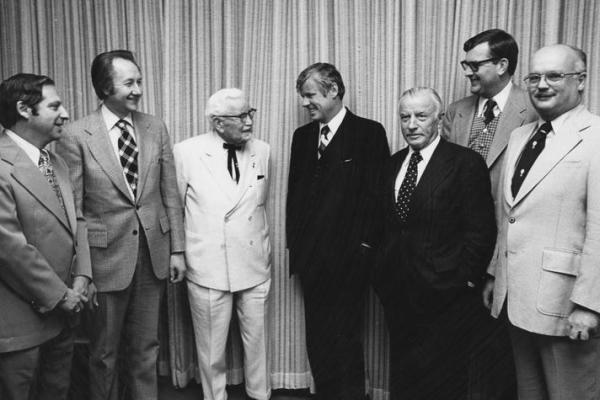The Neuroscience Research Priority Area (NRPA) supports a "collaborative matrix," bringing together diverse groups of investigators, trainees, and research groups from across the University. The impressive depth of neuroscience expertise at UK combined with an engaged community has led to a dynamic and exciting research environment. In support of its mission to develop initiatives that reinforce and promote that success, the NRPA’s guiding strategy is to provide broad-based support to neuroscience researchers across the university.
Use the following sentence to cite funded NRPA awards in your related work:
"This publication (or project) was supported by the University of Kentucky Neuroscience Research Priority Area."




